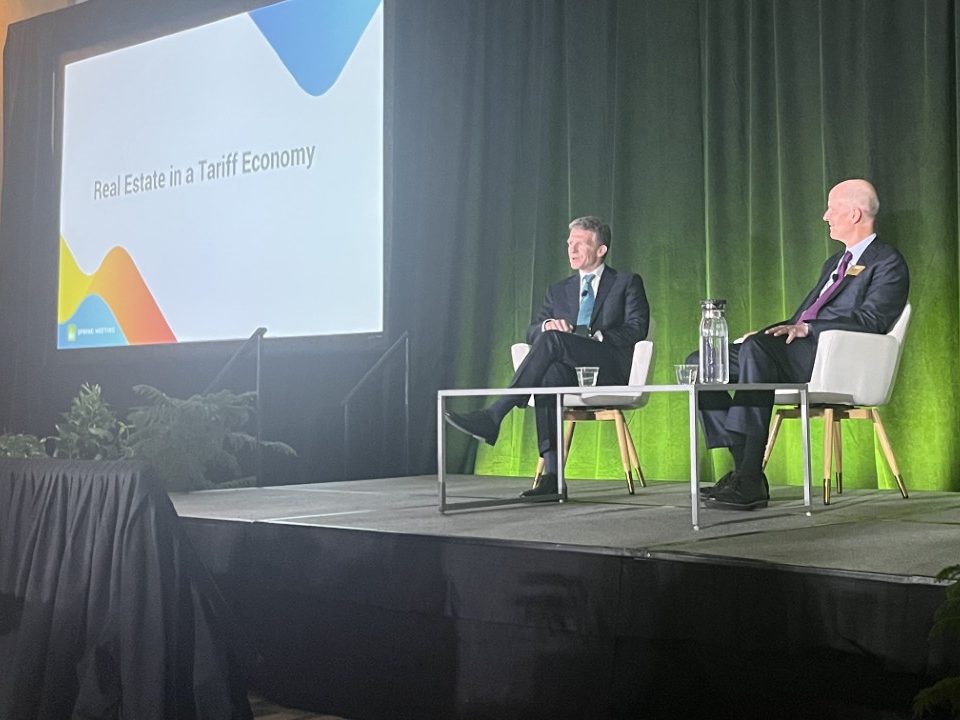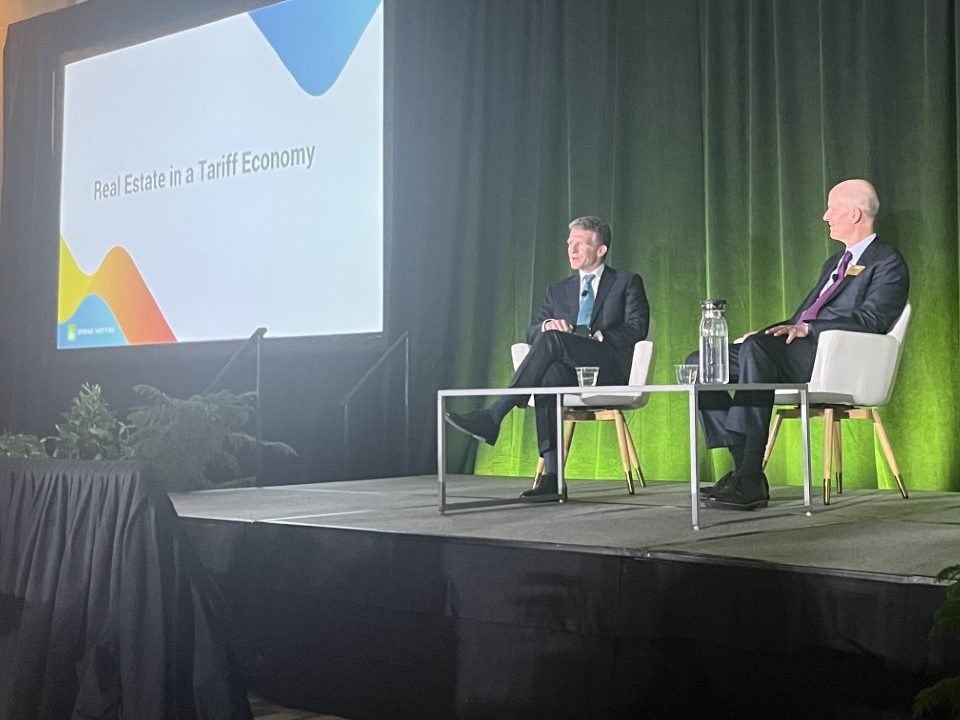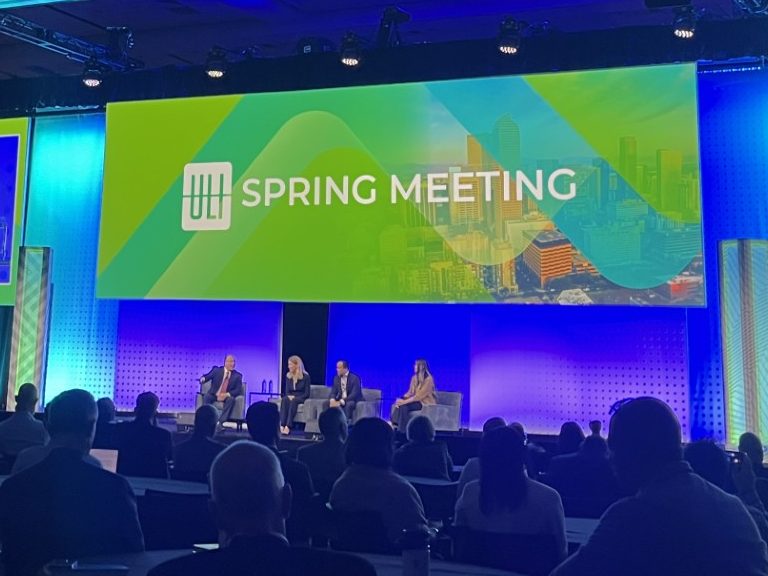ULI Special Report: Optimism and Uncertainty


Both uncertainty about the economy and predictions of relatively strong performances for most commercial real estate asset classes permeated the second day of the Urban Land Institute’s 2025 Spring Meeting. At the same time, present sector fundamentals and economic indicators did little to assuage larger concerns for panelists around the yet-to-be-seen impacts of tariffs and projected slowdowns in construction for most property types.
Still, if stakeholders play their cards right, they could stay immune to the effects of a recession and bubble bursts for property-specific demand and development alike. The key is continuous rent growth.
Bullish about…the office sector?
In many respects, perceptions of an underperforming office sector are often due to misunderstandings about how to analyze the properties’ performance. In fact, quality buildings with strong tenant bases in the right locations make for some of the most compelling investments in the business. At the same time, it’s important not to shy away from the structural difficulties the sector faces.
READ ALSO: ULI Special Report: Sustainability Meets Profitability
This was the argument made by BXP CEO Owen Thomas in a conversation with Willy Walker, chairman & CEO of Walker & Dunlop. “My view is one of clear-eyed optimism,” Thomas told Walker. “You need to see the positives of what’s going on, but you (also) have to be realistic.”
The positives? Trophy office buildings, particularly those on the East Coast, have vacancies well below the national average while hosting industry-leading tenants able to pay high asking rents. Net absorption in these markets was a positive 8 million to 10 million square feet, according to data cited by Thomas.
However, the rest of the sector struggles with climbing vacancy rates and diminished foot traffic. But Thomas was undeterred. “Office vacancies are not the way to look at cities in the office market,” he said. “You should not break it down by city, but by quality.”
In turn, Thomas’ optimism lies in his own observations of some of the East Coast markets where his company owns properties: Boston, New York and Washington, D.C. “(They) have the biggest pools of talent (alongside) some of the largest leases signed last year,” he noted. 40 of the 100 largest office leases in 2024 took place solely in the latter two cities.
This, in Thomas’ view, offsets any population losses that New York, Los Angeles and San Francisco may still be experiencing five years after the pandemic.
When pressed by Walker about why his firm was skipping out on investments in high growth cities like Miami; Austin, Texas, and Houston, Thomas stated that he believed that the markets don’t yet have the same depth of talent as New York City or Boston, despite their strong economies and status as corporate relocation magnets. “They have durable economies, and the local market will entitle the next development very readily, but they’re more complicated and difficult to do,” Thomas said.
In offsetting these missed opportunities, Thomas sees returns on investments in the markets where his company is active coming by way of the ability to charge higher rents on the properties. We need to have the rents in the building cyclically go up. “The highs need to be higher and lows need to be higher,” he said.
Surviving ‘till ‘27

Similar sentiments to Thomas’ were carried through a subsequent panel titled Learning in Real Time: Experts Share Their Forecasts for Real Estate in ’25, ’26, ’27, where a group of research experts at leading commercial real estate investment firms reacted in real time to data around the employment, GDP, sector-specific property returns, cap rates and transaction volumes. Through 2027, nearly all of these metrics were projected to increase.
First up to the plate was real GDP growth, projected to increase by 1.3 percent this year. Given the 0.3 percent contraction that occurred in the first quarter, this might seem like a welcome development, in part due to tariffs being at their highest levels since 1937. “It may look good given the context, but the hard data lags,” said Indy Karlekar, head of research & strategy at Clarion Partners. “We need to wait for (later) May and June,” he said.
Emi Adachi, managing director & co-head of global Investment Research at Heitman remained optimistic despite the murky data. “(The forecast) will likely be bumped up given the recent pause and de-escalation,” she said.
READ ALSO: Forecasting CRE Investment in a Chaotic World
In the next five to 10 years, however, there could be more slowdowns in metrics such as employment and property construction volumes due to population losses incurred by deportations and a falling birth rate. The latter figure has fallen to approximately 1.7 children per woman, the lowest level since the 1970s.
The effects? “Everything we use to build will be a lot more expensive, because a big component of construction is labor,” Karlekar said. Adachi believes that fundamentals could improve through more immigration and policies that improve the quality of life for families. “We need pro-growth policies to boost fundamentals,” she said.
But commercial real estate as a whole is relatively well-positioned to adapt to slowing employment and GDP growth. Suzanne Mulvee, chief strategy officer at GID, cited the business’ performance during the global financial crisis as a cause for optimism. “CRE did just fine during the global financial crisis,” she said. “We can be okay without a ton of job growth, because the other piece of the market is the income.”
Playing to strengths
If it’s continuous rent growth that will allow investors to survive the next two years, some asset classes have far more potential to pull through than others. Retail, industrial and office properties are expected to see rent growth of 2.9 percent, 3.1 percent and 1.5 percent, respectively in 2027, according to ULI’s Real Estate Economic Forecast. These are all significant increases from their projected rates through this year, though some asset classes clearly outperform others.
But investors need to be realistic about where their portfolios currently stand relative to these predictions. “People have to underwrite tremendous growth to grow their way out of a negative leverage situation,” Adachi said.
Making sure that portfolio-wide rents continuously increase is probably the best bet for developers in the next two years, given their butterfly effects on cap rates.
Chances are, any potential buyer is going to equally if not more risk-averse than a current owner. “I remember being afraid to go to the grocery store in 2020, and our uncertainty right now is just as high as that,” Mulvee said. “When uncertainty is high, people don’t want to make a decision that they will regret. (Now), cycles are about five minutes long, and that is overestimating it,” she concluded.
The post ULI Special Report: Optimism and Uncertainty appeared first on Commercial Property Executive.


